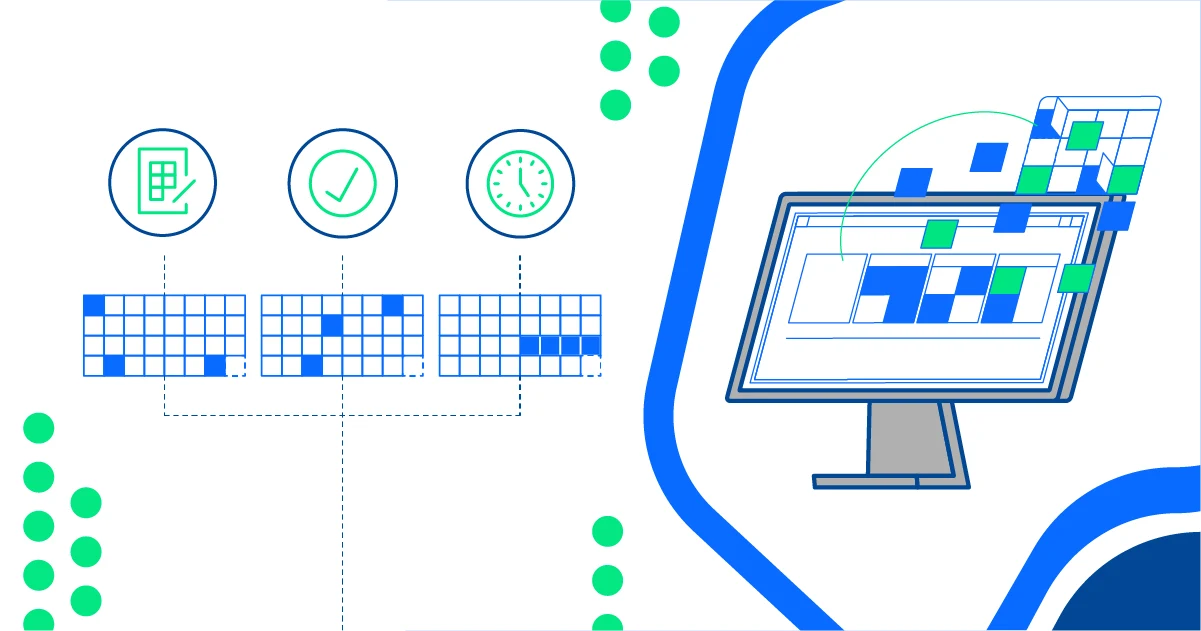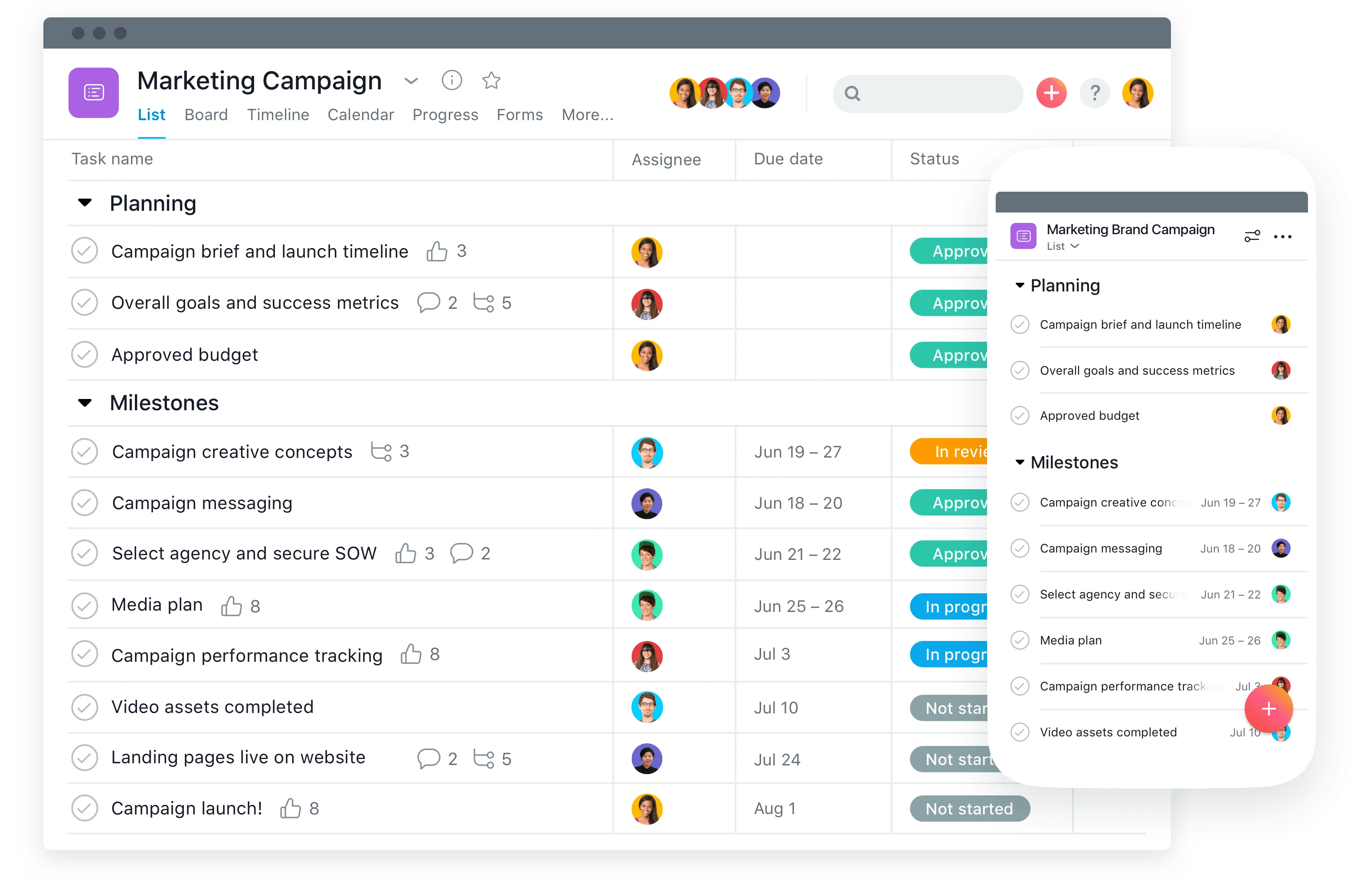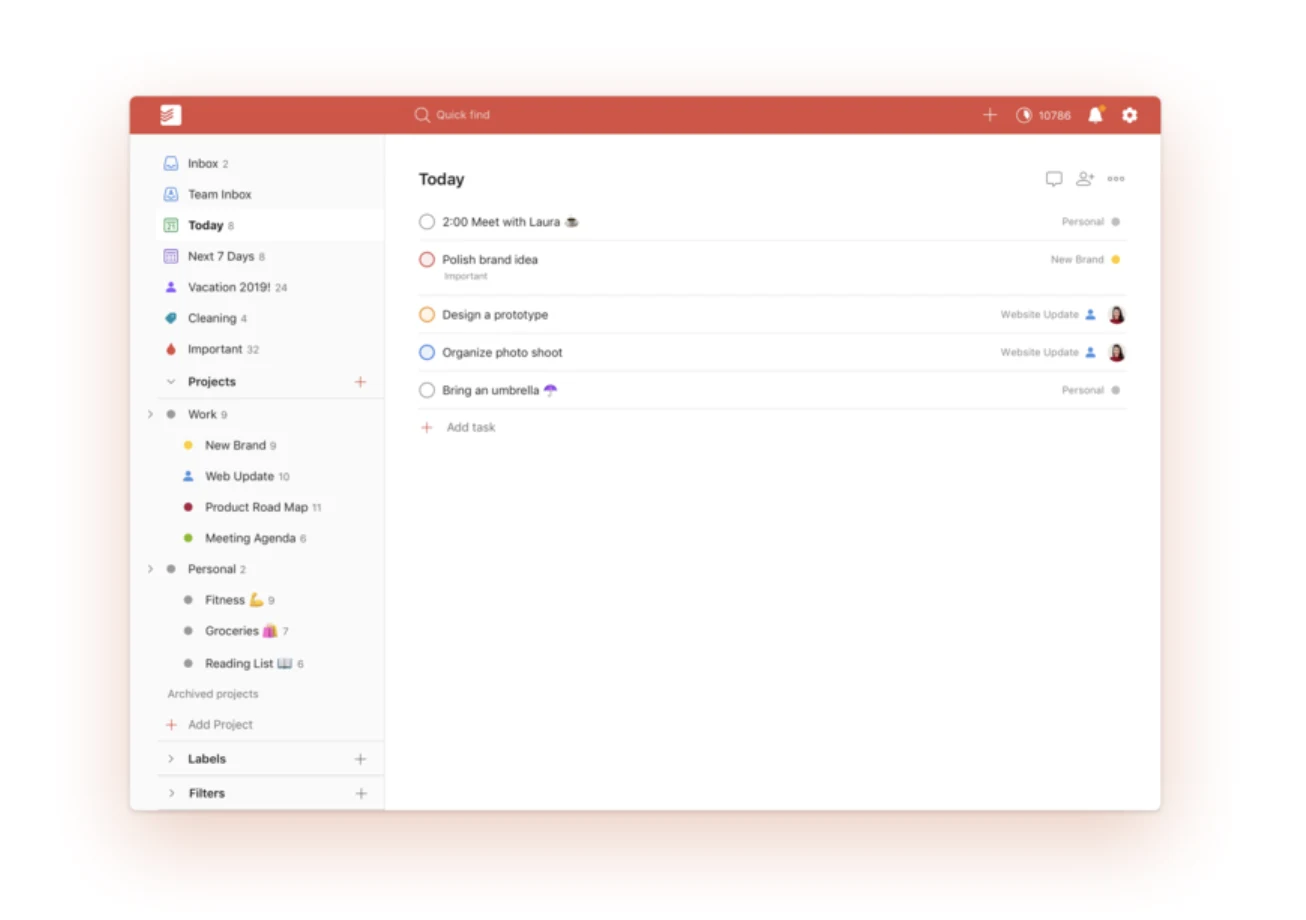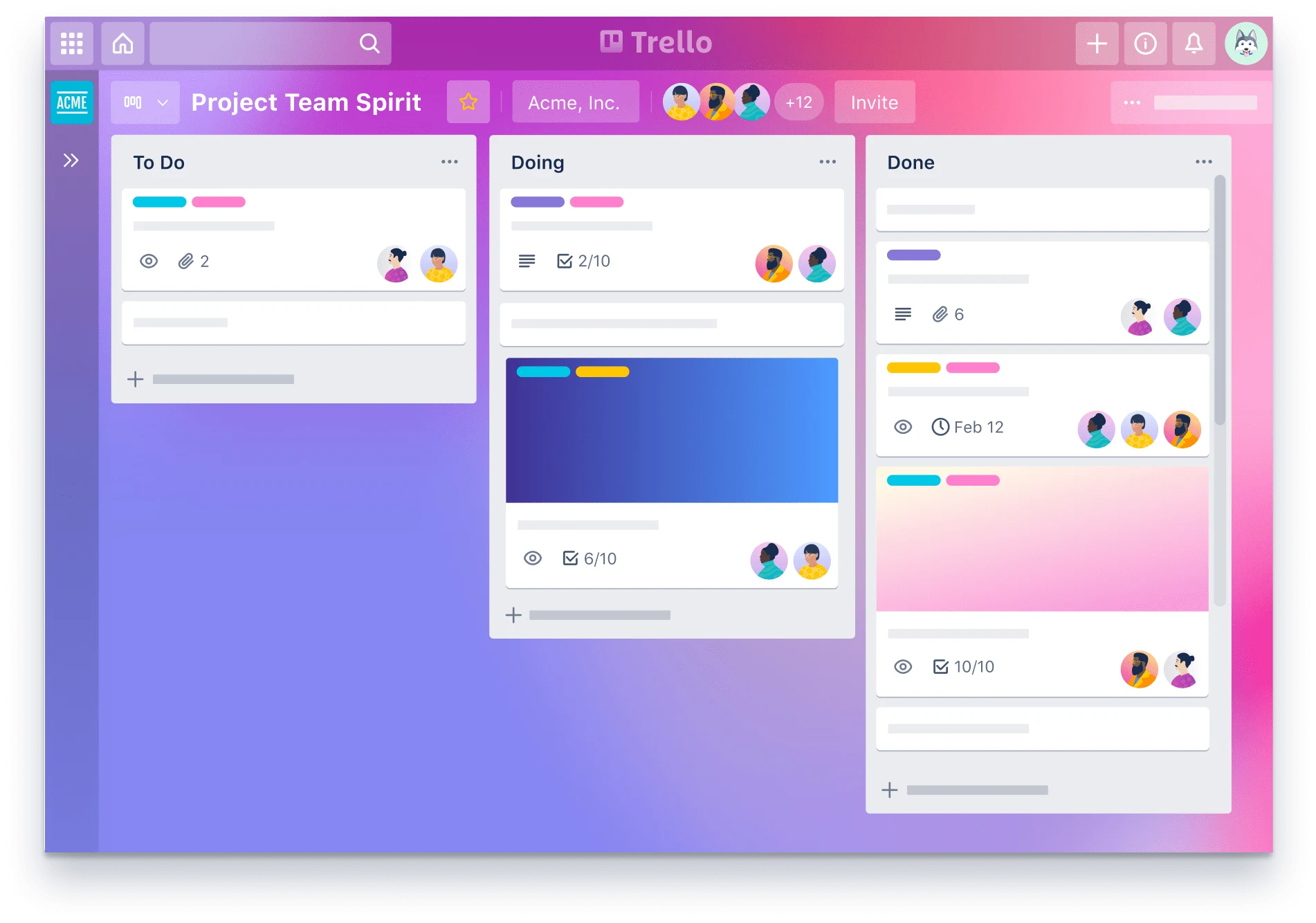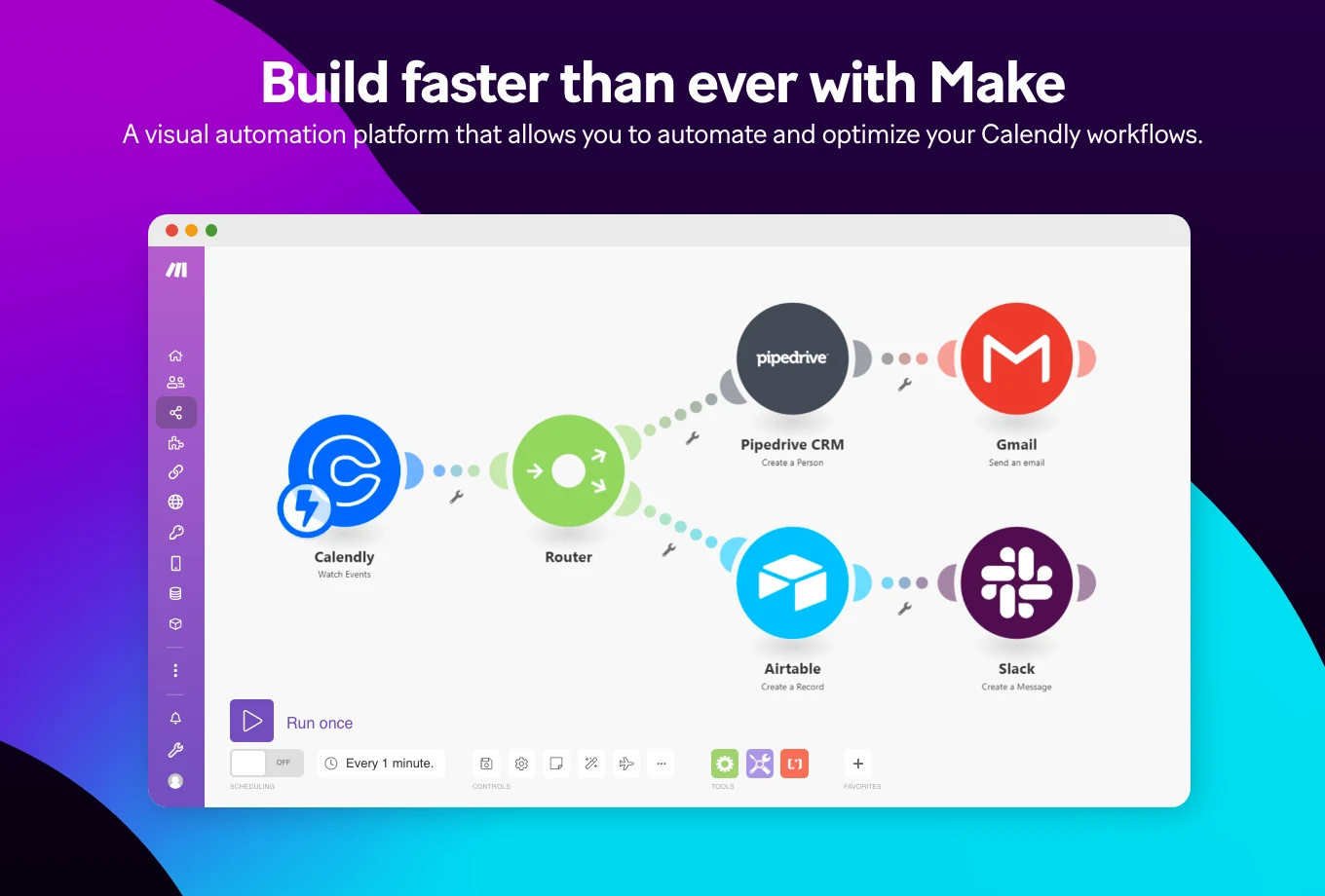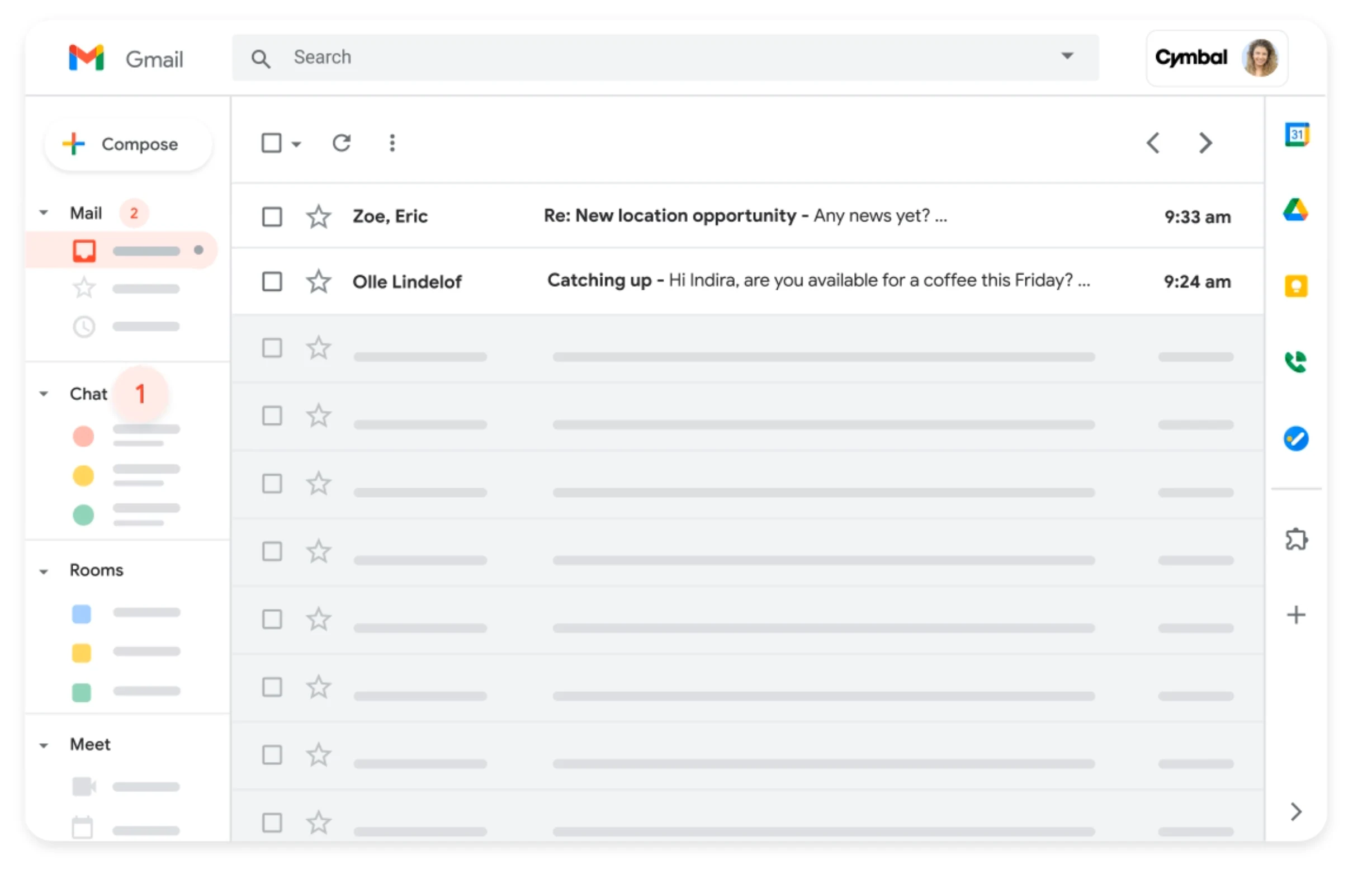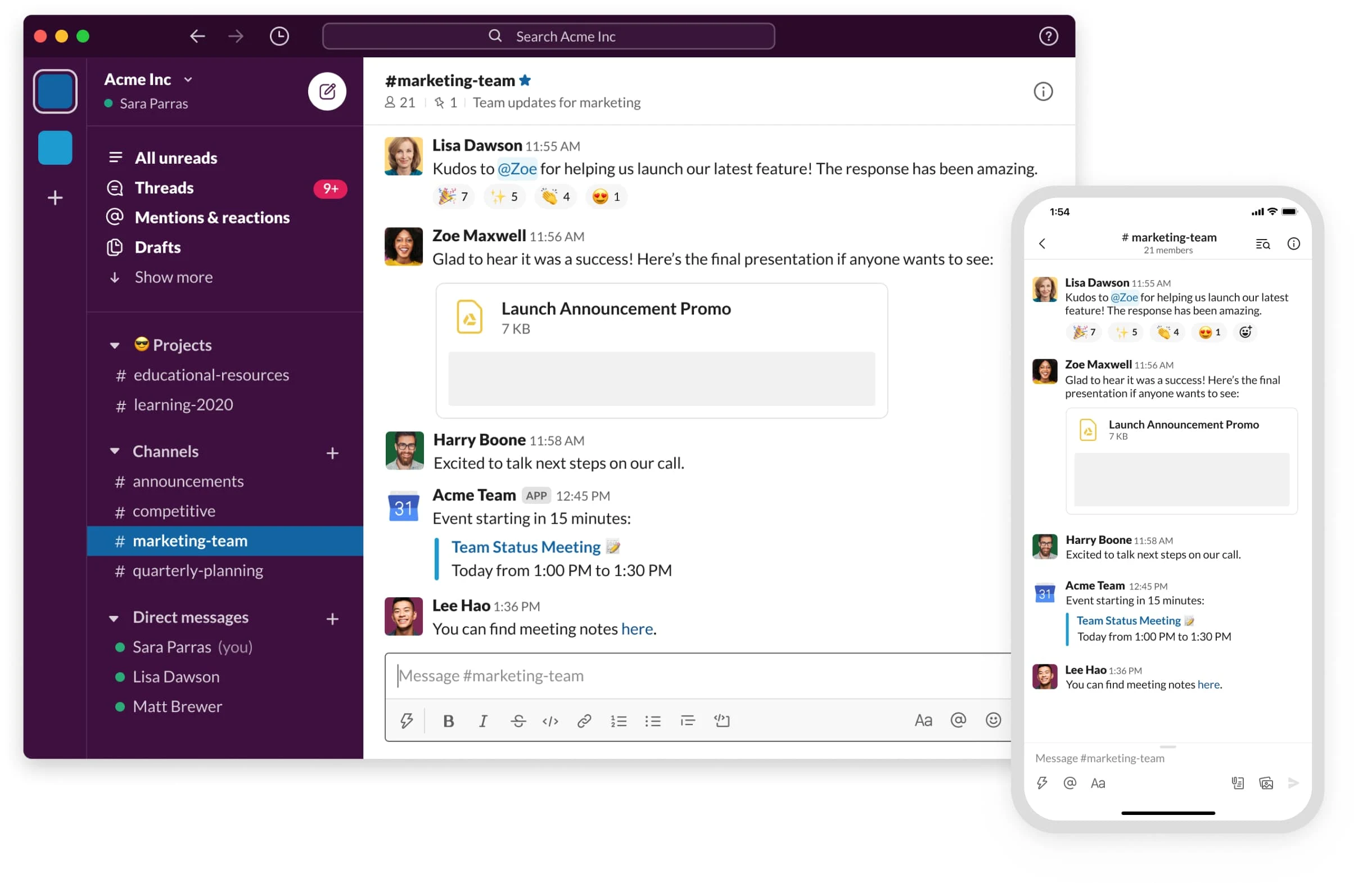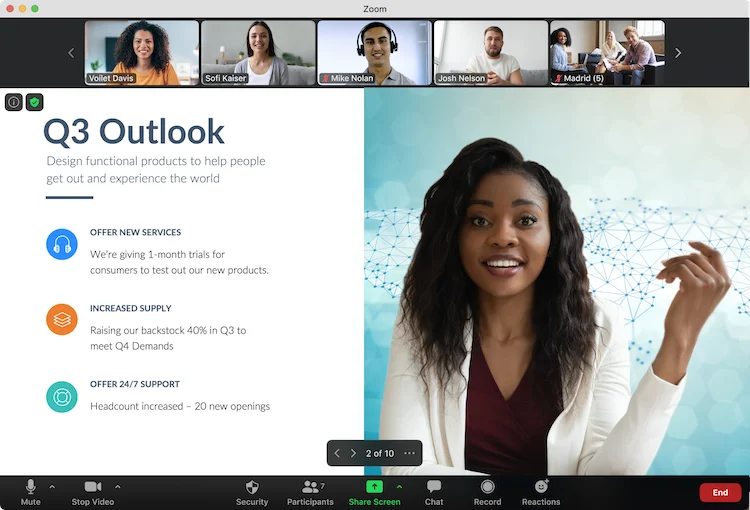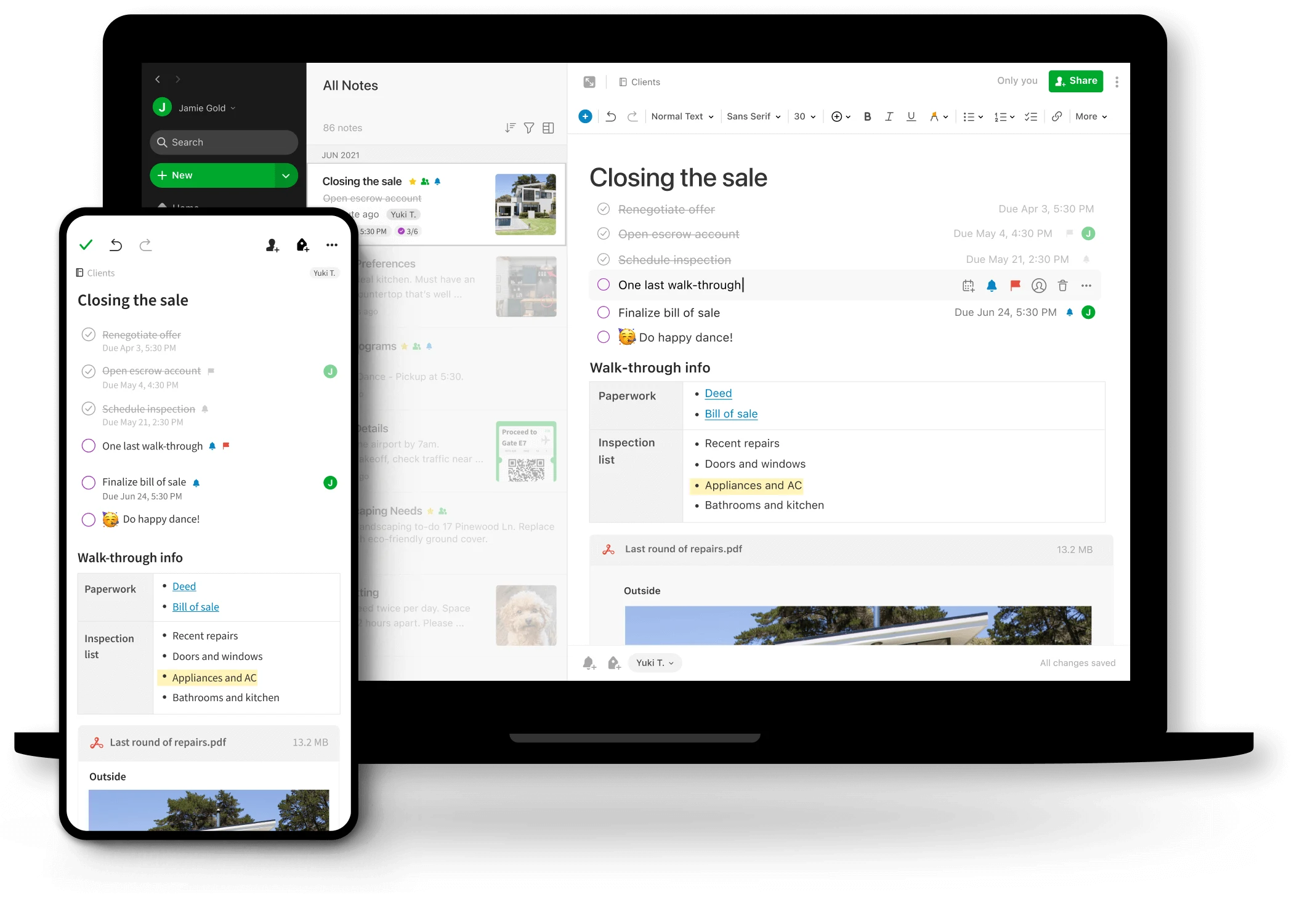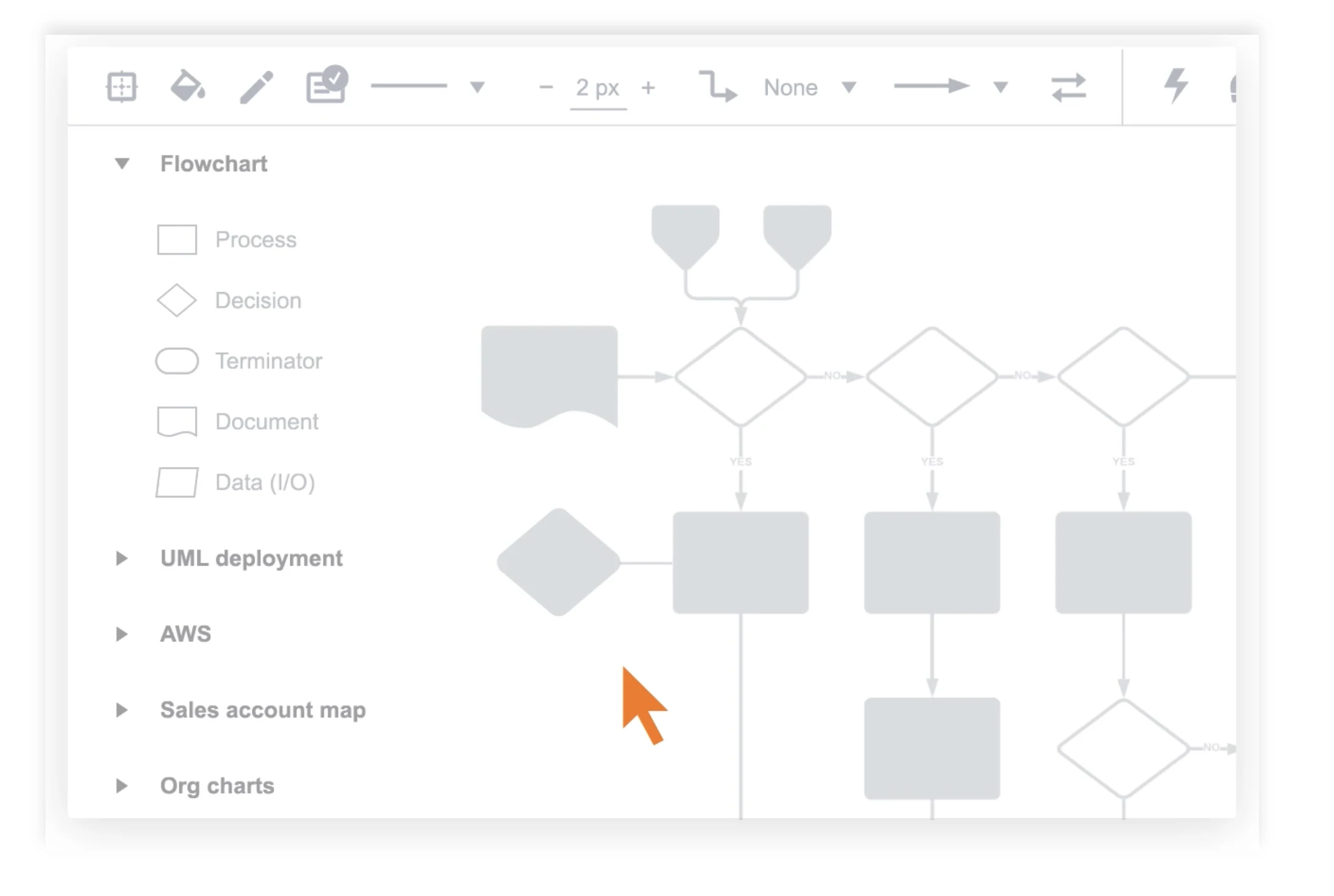Software
The 12 best apps to make 2022 your most productive year yet
Save time with the best productivity apps and time management tools on the market.
Hilary Yeganegi
Jan 03, 2023
20 min read
Table of contents
Productivity apps and time management tools are everywhere, each one promising to be the next best thing to help you get work done. It’s overwhelming enough to try to sift through every tool that helps manage your time, collaborate with peers or automate tasks. But if you’re swamped with work, you definitely don’t have time to wade through the ocean of options.
No need to worry. We’re here to bring you today’s most promising and powerful productivity apps. Our guide pares things down to the best offerings available right now, gleaned from our experience and reviews from a wide range of sources.
You’ll quickly notice that the productivity apps we recommend fulfill a variety of purposes. That’s because productivity looks different for everyone. We answer the following questions any productive person must confront at some point:
What do you need to become more productive?
Do you need a personal assistant to plan projects more effectively?
Do you need to automate tasks to free up time in your schedule?
Or do you need to improve communication with your team?
We’ve broken down our list into categories to make it easy for you to find the exact tools you need.
12 apps for increasing your productivity
You’ll notice most of our recommendations are free productivity apps with paid versions that offer additional features. We took this into account and help break down the differences between the free and paid versions of these tools. The reality is that you get what you pay for, but starting with the free version enables you to thoroughly try out a product. You can take as much time as you need to determine whether a particular tool is the right choice for you.
What is project management productivity, and which apps support it?
When you think of productivity, you probably imagine long lists of tasks and deadlines. This category of productivity apps contains tools to help you with full-scale management of your or your team’s daily workflow. These tools include powerful features for tracking and assigning tasks and deadlines. Each has its own strengths, according to your needs, but all three choices are stellar productivity apps.
1. Asana
Function: Large scale project management, student planner apps, collaboration and workflow management
Cost: Free basic version for up to 15 members; $11/user/month for the first upgraded tier
Asana is considered one of the most flexible and customizable productivity tools out there. With 4.5+ star reviews from PCMag and TechRadar, this tool introduces automation to simplify team project planning and task management. Users include giants like NASA and Salesforce.
Asana’s front-end set up is less intuitive and structured than that of other project management tools. PCMag compares the tool to a deck of cards with its open-endedness and lack of structure, whereas traditional project management tools are more like board games with set rules and linear structures. Some users find they need more time at first to set up projects using Asana. However, in exchange for Asana’s steeper learning curve, users enjoy much greater power and versatility.
Asana offers a variety of collaboration features, especially in the paid tiers:
With Timeline, you can create Gantt charts and keep your team on schedule. Add team members and freelancers to specific projects with varying levels of editing privileges.
A new Workflow Builder offers a central place to create and automate workflows. Simplify how you use Asana features to build more coordinated processes and better collaborate across teams.
Delegate tasks to individual team members with markers and notifications for due dates and priority. Keep tabs on all progress and use the description and updates for note-taking. Set-up subtasks to capture all project needs.
Automate routine tasks so you don't get bogged down by tedious details — or forget the important ones.
Asana will help you ensure your team members have reasonable workloads with task management. You can view all the tasks assigned to one person and keep track of who’s in charge of what with the Portfolio feature.
You'll work with several other tools, and Asana offers a wide variety of app integrations so you can connect the rest of your stack to your project management platform, implement time tracking, and more. Tools such as Slack, Zoom, and Calendly are all easily connected to increase team productivity. You can also upload your files to tasks and projects via tools like Dropbox and Google Drive, enabling in-app editing and collaboration.
Overall, Asana is a powerful and flexible project and task management tool. Although it has a steep learning curve and contains functions that are only available with payment, this tool offers some of the strongest collaboration features of all project planning apps.
2. Todoist
Function: Project management and personal planning
Cost: Free version is robust enough for personal use; $3-5/month for team functionality
Todoist is a leading to-do list tool with high ratings (4.5+ stars) from The Verge, the Apple Store and Google Play. Intuitive and scalable, Todoist is great for task management including simple checklists as well as high-level project management. Its clean design makes even the most complex project feel refreshingly simple. David Allen, author of Getting Things Done, highlights Todoist as one of the best tools for integrating his productivity system.
The value of Todoist is straightforward:
Create a project and make notes.
Determine action steps and select the deadline and priority for each to-do item. Assign labels to indicate contexts, such as a staff meeting or focus work.
Use notifications to receive scheduled reminders for important tasks.
And of course, easily pull up today’s list of appointments and action items.
The inbox feature makes it easy to add agenda items and sort them later; when you're in a fast-paced meeting, Todoist allows you to enter follow-up tasks or assignments quickly and organize them later under their appropriate projects and due dates. With the paid feature, you can also share projects and delegate tasks, but Todoist is not primarily a collaboration tool.
An extensive list of shared calendar apps and external apps integrate with Todoist; it includes Google Calendar and Amazon Alexa.
3. Trello
Function: Team workflow and project planning
Cost: Limited free version; paid versions start at $5/month
Trello is a simple, clean workflow tool. Those familiar with kanban boards will recognize the use of cards and columns for visualizing the status of various projects; it's easy to see real-time progress as you move cards from column to column. If simpler, focused team collaboration is your top priority, you will likely prefer Trello over alternatives like Asana and Todoist.
At its core, Trello is incredibly simple, but it can be souped-up to do many of the fancy things you’d want from a project management tool. It offers integrations (Trello calls them "Power-Ups") with Slack, Google Hangouts, Evernote and many more productivity apps. Additionally, a feature called “Butler” offers automation to minimize tedious maintenance tasks.
Other productivity tools admittedly offer more in terms of customizable views and, to some extent, level of detail in task organizing. But if you want to avoid unnecessary complexity, Trello is the best choice for you and your team.
What are automation productivity apps, and why do I need them?
Sometimes the best-laid plans are never fully implemented due to the volume or complexity of detailed tasks. Some tasks are so simple that they become utterly boring and energy-sapping. Other tasks are so important that you don’t want to leave them susceptible to human error. Save yourself time, tighten up your workflow and reduce errors by automating tasks with one of these excellent apps.
4. Calendly
Function: Automated online collaboration tool and appointment scheduling
Cost: Highly useful free version; paid plans start at $10/user/month (billed annually), 14 day trial of paid version available
Calendly acts like a personal assistant. If you have a lot of meetings to schedule on a weekly basis, Calendly will simplify that process for you with the intuition of a skilled administrative assistant, eliminating the hassle of back-and-forth
Calendly integrates with Google Calendar, Outlook and other tools to connect with up to six calendars.
The tool automatically checks availability and helps you schedule meetings, taking into account time zones, your colleagues’ schedules and the need for buffer time between meetings.
Calendly allows you to plan all types of meetings — one-on-one talks, round robin scheduling, collective meetings, or group events such as webinars, trainings, and more.
The Calendly browser extensions give you quick access to the tool to embed within emails to send to invitees
With its highly customizable features, Calendly simplifies the process of scheduling and removes the tedium of having to follow up with people or communicate sudden schedule changes. The tool responds to your preferences and only shares need-to-know information.
The app is even more intuitive when your teammates also use Calendly. See an overview of your team's schedules and receive analytics on scheduling trends in your group. You also have the option to integrate with a wide range of other productivity apps, such as Zoom, Zapier, and HubSpot. Read more on how Calendly also functions as school management software.
Webinar: How teams use Calendly
5. Zapier
Function: Integration and task automation
Cost: Free for up to 100 tasks/month; increased capacity upgrades start at $20/month
Zapier allows you to cherry-pick from the best apps and integrates them seamlessly for daily use. Here are some of the perks:
Boasting integration with more than 4,000 apps, Zapier automates tedious, easy-to-overlook tasks.
These include tasks such as adding subscribers to your email list or adding items from a Facebook conversation into your calendar and sending a notification
No coding knowledge is required. Zapier asks you simple questions about what you want to do, and as you answer the prompts, the app sets up the tasks for you.
Some very well-known companies use Zapier, such as Spotify and Adobe, but the tool scales for users of any size.
On one hand, Zapier carries out the low-level, tedious tasks that take up brain space and sap productivity in less time. On the other hand, the tool makes sure that you don’t overlook crucial elements of your workflow. For instance, if you use multiple messaging tools, you might forget to check one platform or the other. This means missing an important sales lead or a time sensitive issue. Zapier integrates all messaging platforms and centralizes notifications cross-platform so you only have to check one messaging app to get your day’s updates.
With Zapier, the possibilities for automating tasks and integrating applications are virtually endless. To demonstrate, check out how Zapier allows you to easily integrate Calendly with many of the other apps mentioned on this list: Asana, Todoist, Trello and Evernote, to name a few.
E-book: 4 ways to automate your lead management
6. Make (formerly Integromat)
Function: Visual platform for anyone to design, build, and automate anything
Cost: Free plan for up to 1000 operations/month; paid plans with advanced features starting from $9/month
Make (formerly Integromat) is the leading visual platform for anyone to design, build, and automate anything - from tasks and workflows to apps and systems - without coding. Make offers an intuitive and playful experience, which sets it further apart from other automation tools. It allows you to:
Connect to more than 1,000 apps, or use Make’s no code toolkit, which includes the generic HTTP app that allows you to connect to any app or service with an API.
Automate based on thousands of free pre-built templates, helping you build your workflows.
Design workflows with as many apps and steps as you need. Add filters and conditional logic for more complex processes, and see how your data moves cross-platform.
Watch your workflows run in real time for visual testing, rather than dealing with code or testing each step individually.
With Make, you aren’t just connecting apps and automating workflows, but creatively responding to workplace challenges by building solutions. This allows you to move from rigid, repetitive tasks to flexible, meaningful activities.
By empowering you to visualize, collaborate, and innovate processes, Make changes how you work from the ground up, and is used and trusted by very well-known companies such as Meta, Qualtrics and Spotify, though the tool is great for users of any size.
You can get started for free, and begin building your solutions right away, as simple, or as complex, as you need them. Check out how Make enables you to integrate Calendly with many of the other apps mentioned on this list: Asana, Todoist, Hootsuite, Trello and Evernote, to name a few.
Which apps help teams collaborate?
Every team has a unique culture, communication process and project workflow. Dysfunctions that arise in team settings are only magnified when workers cannot coordinate or communicate effectively and efficiently. Overcoming these obstacles leads to greater productivity, synergy and creativity as a team. The power of group collaboration apps is changing the way people work together and expanding the possibilities for creative solutions and project workflows. Group collaboration tools also help increase business longevity and personal connections because they make it much easier to stay connected.
7. Google Workspace
Function: Collaboration and content creation
Cost: $6/user/month for basic package
Google Workspace is often known as "all those Google apps":
Google Docs is a shared document tool great for collaborating and tracking revisions
Google Sheets is a lighter weight but easily integrated version of Microsoft's excel
Google Slides is a portable dynamic slide tool great for collaboration and 11th hour deck updates.
Additional products include Chat, Gmail, Calendar, Drive and Meet
These apps are powerful, online alternatives to popular office suites such as Microsoft Office. They offer not only similar document, spreadsheet and presentation creation features, but also streamlined and convenient real-time collaboration tools, online storage and file sharing capabilities. Additionally, Google Workspace helps users avoid many licensing and updating problems that users encounter with more traditional tools, such as Office.
But these Google apps are free, so why pay a monthly fee? For starters, the $6/month version of Google Workspace doubles each user's storage from 15GB to 30GB. Google Workspace also focuses on business applications and team collaboration functions; while Google applications might suffice for a college student, Google Workspace enables team admin controls, an in-suite group-messaging app called Currents and insights on organizational development through a tool called Work Insights.
Additionally, the paid version of Google Workspace includes human tech support and excellent searchable content. It's almost eerie how easy it is to find previous conversations or buried emails. Tracking changes, commenting and working on the same piece of content as a team is easier than ever with Google Workspace. Administrators can also enable offline access to users to make certain Google Workspace apps available while traveling or if internet connection is unavailable.
As a plus, Google Workspace tools also integrate seamlessly with Calendly, unlocking additional scheduling automation functionality to enhance your Google experience. Easily connect your Calendly account to Google Calendar to reference availability and book meetings, and add Google Meet as your meeting location to automatically add a unique video link to all booked meetings. You can also enable the Calendly Google Chrome browser extension to access your scheduling links on the fly and embed times into Gmail messages.
8. Slack
Function: Group messaging and communication
Cost: Free for basic; starts at $6.67/user/month for unlimited history and integrations
Slack, used by global companies like Target and Netflix, is a group messaging tool. It functions to make a team feel like they’re working in the same room, even if they’re continents apart.
The tool is a vast improvement to standard email conversations because of the these popular features:
Real-time responses are more efficient and less cumbersome than the process of sifting through seven or eight emails that all respond to a single thread.
You can start easily viewable conversation threads and sort conversations by coworker
Customize your notification settings to ping you for the most important updates, and pause notifications during focused work time
Select groups of peers to discuss projects with.
You can pin important announcements, tag relevant project personnel and search conversation histories for important details.
In some cases, users might even prefer Slack to in-person meetings. If a coworker begins a side-conversation, label it and put it aside as a new thread so everyone can stay focused on the original topic of discussion. Rather than handing out paper or digital copies of documents and hoping they’ll be organized appropriately, add an attachment directly in the conversation, where it is relevant. Slack automatically stores shared files and organizes them under relevant threads of discussion, so users can easily access and find documents whenever they need to. And if there’s a need to set-up a follow-up meeting, Calendly offers a Slack integration that lets you share your availability directly in Slack along with your chosen event type and a personal message.
Security is an important component of Slack. Encrypted data and single sign-on ensure that you can have sensitive conversations within the platform. This is a big help to teams that collaborate remotely. Plus, Slack offers desktop apps as well as mobile apps for iPhone iOs and Android to keep you connected on the go.
9. Zoom
Function: Remote meetings and video conferencing
Cost: Free for a robust basic version; $15/month for more features.
With the rise in remote and distributed work, today’s companies value team productivity and collaboration in and outside the office. Zoom enables high-quality video conferencing with many features to streamline project workflows.
Few things are more frustrating in the workplace than sitting in a call with collaborators, waiting for one person to get their tech up and running. Or maybe you have a good flow going in your conversation and real work is getting done… And then your connection fails, and you have to try to restart the conversation with the same energy. Zoom's powerful technology makes it one of the most reliable video conferencing options out there. It’s also available wherever you are, with a downloadable Zoom Client, Microsoft Outlook Add-in, Zoom extension for Chrome and Firefox browsers, and mobile apps for Apple iPhone iOs and Android - you can take a call from anywhere.
Zoom integrates with a host of other tools such as Google Calendar, Evernote and Calendly. It can handle up to 49 simultaneous videos on a screen and up to 1,000 participants on the same video call. This makes it a popular choice for webinars and classroom settings.
Supplemental productivity apps
Most companies will have use for content organization and social media management. While there are many competitors in these fields, Evernote and Hootsuite stand out as trusted, powerful and highly developed options.
10. Evernote
Function: Content organization and note-taking app
Cost: Free barebones basic version. $8/month or $15/month for collaborative features.
Organizing content is one of the most overlooked ways to becoming more productive. If your school, work or hobbies involve a significant amount of note-taking and content sharing, such as web content or written assignments, Evernote will be a great choice for you.
Evernote is a great productivity app for organizing and archiving content. It offers several levels of customizable organization, so you can set it up in a way that fits your preferences. The tool is available as a web version, as well as downloadable app for Windows, Mac, iOs or Android.
Evernote also lets you create content in a variety of ways. If you think best using pen and paper, take a picture of your notes and use Evernote’s optical character recognition (OCR) feature to convert your handwritten scribbles into searchable text. If you think better aloud, use the audio recorder and save your verbal thoughts as a note for later.
The web clipper makes it easy to store website info without the ads; stored website content also becomes searchable. So if you find a great article on a topic of interest, clip it to Evernote and come back to it later by searching the text or using any tags you added.
Evernote’s drawback is its price tag. There is a free version of the app, but it doesn't offer much more functionality than Google Keep or Apple Notes, both of which are free and simple to use. Others also often compare Evernote to OneNote, which shares much of the same functionality and is free (with limited online storage). However, the $8/month brings 10GB of uploads every month and some more powerful features than OneNote’s.
While Evernote's security isn't the strongest (data is stored on Google Drive), you can use third-party apps like Saferoom to ensure the level of security you need. Integration with other tools like Zapier also enables access to relevant information or tools such as calendars, emails and other productivity and communication apps.
11. Hootsuite
Function: Social media management
Cost: Limited freeplan; full-feature plans start at $49/month
Hootsuite takes a lot of the guesswork out of strategizing for social media, and offers specified tools for organizing and planning social media strategy. Used by 800 of the Fortune 1000 companies, Hootsuite is a gold standard productivity app for anyone in business or nonprofit work.
Hootsuite includes planning tools for when and how to post content. Create a customized posting calendar and keep track of important details like the hashtags and strategies unique to each platform. You can create several posts at a time and schedule them to be posted at specific times in the future. This is a huge time saver because you don't have to shift gears to post at inconvenient times.
Hootsuite’s analytic tools provide valuable insight into how well your organization is reaching audiences across various social media platforms in real time. You’ll be able to learn what types of posts garner more attention and what times are the most optimal for posting.
Hootsuite saves users a lot of time in the long run. There is, however, a significant learning curve in the beginning. And if you're just getting started as a business or a nonprofit, $30/month likely seems like a steep price tag. The free version is functional but lacks the analytics features and limits you to 30 posts per month. But after Hootsuite’s free version helps you expand and improve your social media presence, your budget will be able to afford a full-feature plan.
12. Lucidchart
Function: Project management
Cost: Free plan for basic functionality, $7.95/month for individuals, and $9/month (per user) for a team
Lucidchart improves productivity by visualization and graphs of workflows. You just create a document (there are many templates to choose from) to get you started. There are hundreds of shapes and colors to customize your template.
Lucidchart can help you and your team collaborate in interface software by tagging team members. The seamless communication makes everything transparent and simple.
Make this year your most productive yet
Remaining competitive in the digital age requires using the best digital tools. Although we could have included dozens of other productivity apps in this “best of” list, we’re confident these recommendations include the most powerful and versatile tools that address today’s most fundamental productivity issues, ranging from scheduling to remote collaboration.
The possibilities are endless. Become the most productive you’ve ever been by choosing the best tools for your needs.
Get started with Calendly
Ready to make scheduling easier than ever?
Related Articles
Don't leave your prospects, customers, and candidates waiting
Calendly eliminates the scheduling back and forth and helps you hit goals faster. Get started in seconds.
Calendly eliminates the scheduling back and forth and helps you hit goals faster. Get started in seconds.

